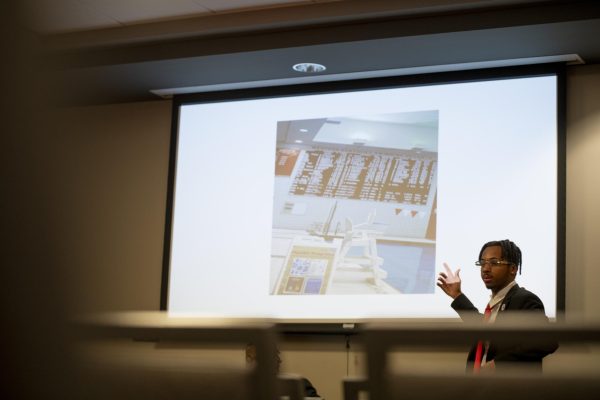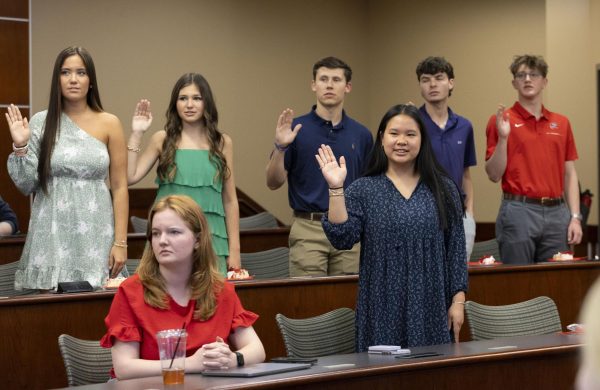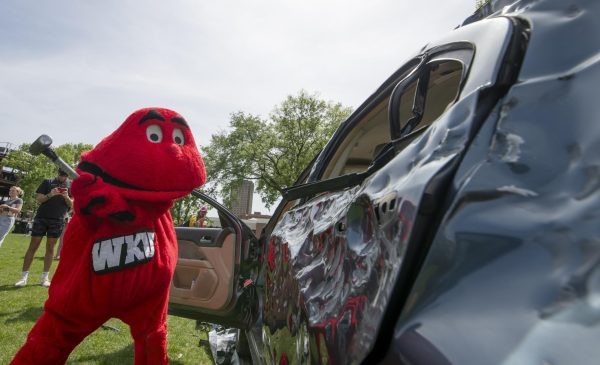Smith Stadium slated for repairs
February 5, 2004
A pool of standing water rested in a hallway outside offices yesterday in Smith Stadium, yet no one was alarmed.
“That’s nothing out of the ordinary on any given day,” Athletic Director Wood Selig said.
The carpeting was damaged and smelled like a wet dog, he said.
Faculty and staff working out of Smith Stadium are dealing with years of wear and water damage.
The problem has been brought to President Gary Ransdell’s attention – and he has promised to make repairing the building a priority.
Ransdell said he was not aware of the “deplorable conditions” at Smith Stadium until a recent visit with members of the physical education department.
“No faculty and staff member or student should have to endure the conditions that we have expected them to endure in that building,” he said.
Ransdell brought a slab of concrete that had to be removed from an athletic training room in Smith Stadium to the Jan. 23 Board of Regents meeting.
Head Athletic Trainer Bill Edwards said he had noticed the concrete separating over several years and periodically checked it.
Edwards said the concrete was loose last semester, so he went ahead and dislodged it with a broomstick.
“It could have hurt one of us pretty bad if we hadn’t been watching it,” he said.
Ransdell said he showed the piece of concrete to the board to make them aware of the conditions.
Doug Ault, director of facilities management, said $20,000 was spent repairing the ramps of Smith Stadium last year.
The building needs new ceiling and floor tiles, a new air conditioning system and more repairs to the cracks, he said.
Renovating Smith Stadium would likely fit into a six-year plan that would be submitted to the 2008 General Assembly unless priorities change, he said.
John Osborne, vice president of campus services and facilities, said Smith Stadium was built in 1967 and opened in 1968.
A physical education office on the third floor has a gutter in place with trash cans below it to prevent any water leakage from running out onto a desk.
“Every area has had to get creative to battle the elements that nobody should have to endure,” Selig said.
Another office on the third floor was turned into a storage room because of the water damage.
Ransdell said he thinks Smith Stadium is in worse condition than Thompson Complex North Wing, but the commitment to first renovate the science buildings won’t change.
Gov. Ernie Fletcher has proposed spending $27 million in the next state budget to renovate Western’s science buildings.
Ault said the building degrades quicker with age because the concrete structure is exposed to weather.
“Over time, cracks in concrete form and moisture gets down into the offices,” Ault said.
Smith Stadium is still structurally safe, but will emerge as a renovation project in the future, Osborne said.
More emphasis will be put on renovating Smith Stadium after renovations are completed on the science buildings, he said.
Mary Cobb, a physical education and recreation instructor, said soft drink syrup left on the concession room floor above her office once dripped through her ceiling and onto her office floor.
“The maintenance folks do the best they can, but there comes a point when you can’t fix something that is deteriorating,” she said.
The physical education major is becoming increasingly popular, Ransdell said.
Creating a good learning environment can be difficult in the building, Cobb said. The water leakages at the stadium have affected students in her gymnastics class.
Reach Lindsey Reed at [email protected].

























